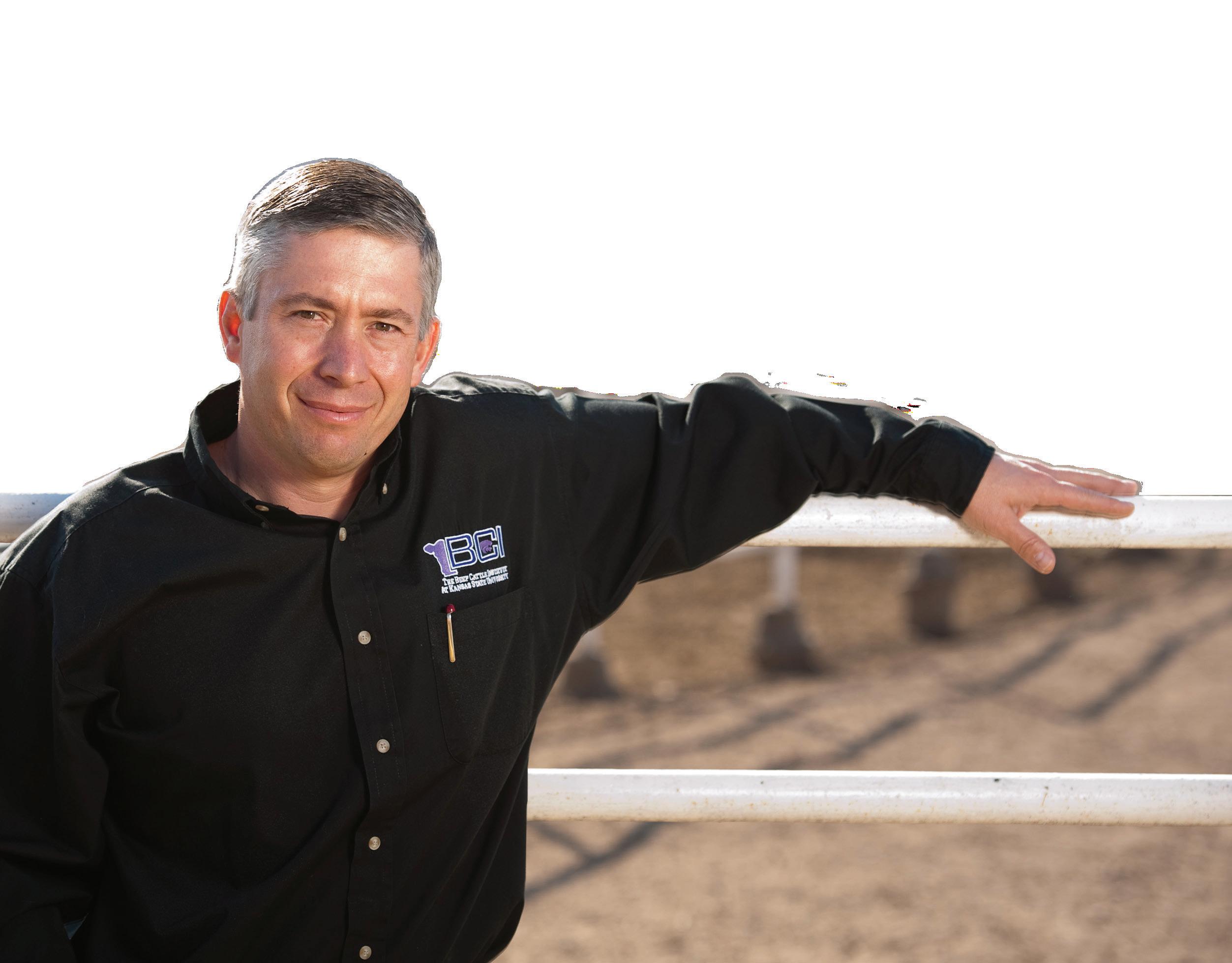
3 minute read
Caregiver Contribution to Cattle Well-Being
By: Dr. Tom Noffsinger
By: Dr. Tom Noffsinger, Production Animal Consultation


Cattle caregivers have exciting obligations, responsibilities, and opportunities to contribute to cattle well-being. Shifting caregiver priorities from disease detection to performance enhancement results in new levels of cattle welfare.
Cattle caregivers have exciting obligations, responsibilities, and opportunities to contribute to cattle well-being. Shifting caregiver priorities from disease detection to performance enhancement results in new levels of cattle welfare.

detection to performance enhancement results in new levels of cattle welfare.
Webster defines welfare as health, happiness, and general well-being. We have a responsibility to provide cattle with physical comfort, disease protection, nutritional needs, and emotional stability. Veterinarians understand that physical and psychological stress play important roles in cattle disease resistance and performance levels. Caretakers can be trained to realize that all human contact with cattle impacts animal well being. Human contact can either create a very positive impact or can create an impact that can devastate cattle health, performance and cattle and human safety.
Webster defines welfare as health, happiness, and general well-being. We have a responsibility to provide cattle with physical comfort, disease protection, nutritional needs, and emotional stability. Veterinarians understand that physical and psychological stress play important roles in cattle disease resistance and performance levels. Caretakers can be trained to realize that all human contact with cattle impacts animal well-being. Human contact can either create a very positive impact or can create an impact that can devastate cattle health, performance and cattle and human safety.
Veterinarians must improve their abilities to train caretakers to encourage cattle to communicate their true state of health. Understanding predator-prey relationships early detection of disease.
Veterinarians must improve their abilities to train caretakers to encourage cattle to communicate their true state of health. Understanding predator-prey relationships is the foundation for successful cattle handling and the development of communication with cattle - which enables early detection of disease.
Veterinarians must improve their abilities to train caretakers to encourage cattle to communicate their true state of health. Understanding predator-prey relationships is the foundation for successful cattle handling and the development of communication with cattle - which enables early detection of disease.
Cattle exhibit very strong prey animal instincts. Prey animals have survived in nature aware that predators select the lame, depressed, and weak to harvest. If caretakers
Cattle exhibit very strong prey animal instincts. Prey animals have survived in nature aware that predators select the lame, depressed, and weak to harvest. If behave like predators, cattle will hide signs of depression and disease from these people as long as possible. Understanding more about the visual, auditory and sensory abilities of cattle encourages handlers to override their predator tendencies, such as to chase and yell. caretakers behave like predators, cattle will hide signs of depression and disease from these people as long as possible. Understanding more about the visual, auditory and sensory abilities of cattle encourages handlers to override their predator tendencies, such as to chase and yell.
Handlers that reward cattle motion with release of pressure can quickly train cattle – and in doing so create mutual respect and develop trust between themselves and the cattle. Understanding that cattle like to see what is pressuring them and like to see where they can go is fundamental to low-stress handling. Cattle that trust handlers volunteer to move away from handlers and will walk straight away and move as directed. This attitude of willingness has a positive effect on herd social interaction. Sensitive cattle are more content and timid cattle are more willing to compete for feed and water. Handling opportunities become positive to cattle health and performance instead of a stress.
Handlers that reward cattle motion with release of pressure can quickly train cattle – and in doing so create mutual respect and develop trust between themselves and the cattle. Understanding that cattle like to see what is pressuring them and like to see where they can go is fundamental to low-stress handling. Cattle that trust handlers volunteer to move away from handlers and will walk straight away and move as directed. This attitude of willingness has a positive effect on herd social interaction. Sensitive cattle are more content and timid cattle are more willing to compete for feed and water. Handling opportunities become positive to cattle health and performance instead of a stress.
Caretakers can have a positive impact on cattle health and performance. Cattle are easily trained to respond to the release of pressure and become more willing to communicate their true state of health when they realize that handlers are not predators. Caretakers that concentrate on low-stress handling skills increase their powers of observation, recognize abnormal behavior and attitude and develop the confidence and skill to manipulate behavior to improve levels of animal welfare. ** can quickly train cattle and in doing so create mutual cattle. Understanding that cattle like to see what is handlers volunteer to move away from handlers and will willingness has a positive effect on herd social interaction. Sensitive cattle are more content and timid cattle are more improve levels of animal welfare. **
Caretakers can have a positive impact on cattle health and performance. Cattle are easily trained to respond to the release of pressure and become more willing to communicate their true state of health when they realize that handlers are not predators. Caretakers that concentrate on low-stress handling skills increase their powers of observation, recognize abnormal behavior and attitude and develop the confidence and skill to manipulate behavior to improve levels of animal welfare. **








